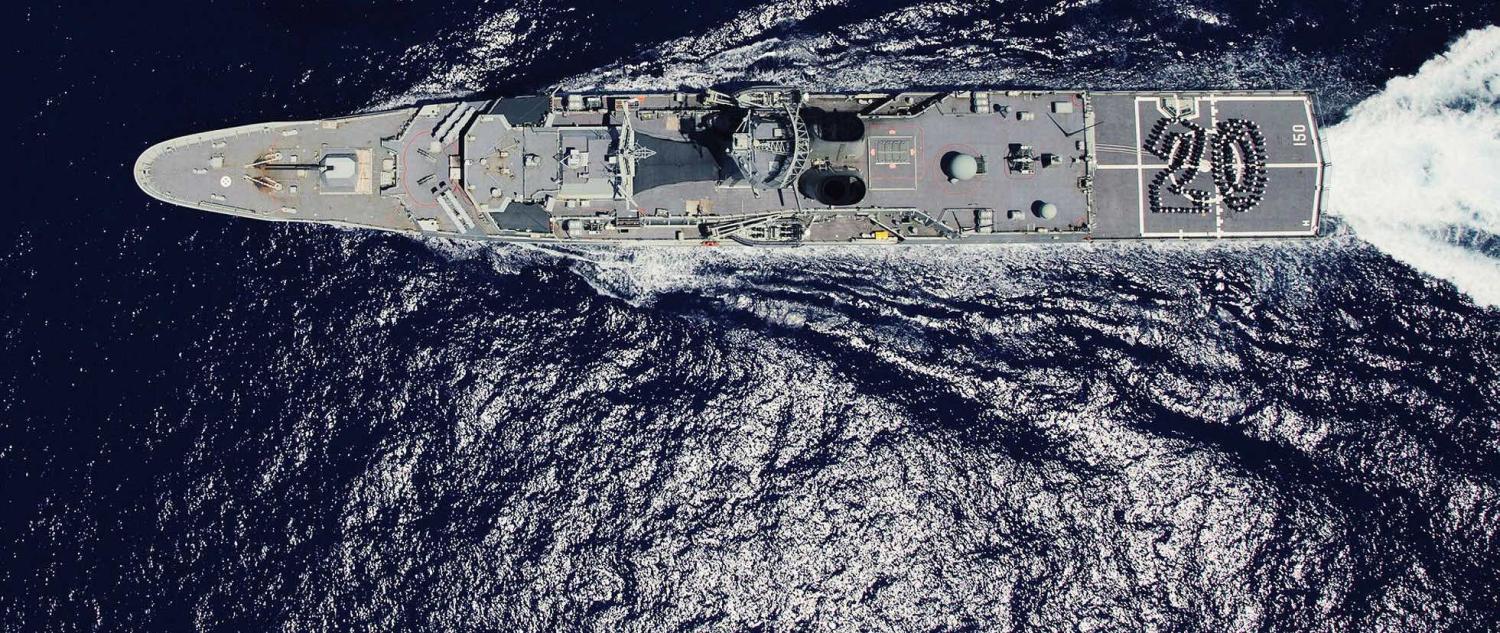How should we react to news reports that China challenged Australian warships in the course of transiting the South China Sea, on their way from Subic Bay in the Philippines to Ho Chi Minh City in Vietnam?
Without knowing where the challenge occurred (was it inside 12 nautical miles of a Chinese-occupied feature, or not?) or what form it took (a verbal challenge by radio, or something more physical in nature?), it’s hard to say how significant this episode really is.
China’s military has previously challenged Indian Navy vessels and Australian aircraft in the South China Sea without any indication that they were operating within 12 nautical miles of rocks or islands. Prime Minister Malcolm Turnbull’s response when asked about the reports this morning was simply to assert Australia’s “perfect right” to operate in the South China Sea.
Was this the much-anticipated will-they, won’t-they Australian FONOP in the South China Sea? Probably not. Canberra’s standard refrain is that it doesn’t do FONOPs, at least not in the way the US Navy does.
A navigational course from Subic Bay to Ho Chi Minh City would have taken the Australian warships conveniently close to the disputed Spratly Islands, the scene of China’s island-building efforts and US Navy FONOPs in recent years. But most likely this was a routine transit conducted in the normal operational mode.
Clearly, someone in Australia’s defence and security establishment wanted the challenge to be made public. That is significant in itself, suggesting a desire to publicise Australia’s naval presence in a strategically important and contested body of water, and China’s apparent intention to impede legal passage there.
The news reports on Friday also underline a more basic point about the recent revival of Australia’s naval presence in Southeast Asia.
Multi-ship Australian naval deployments used to be a routine occurrence in the region. Small naval contingents previously visited Vietnam, as far back as 1999 and again in 2001. But in recent years the combined demands of border security and Middle East coalition deployments have sapped the Royal Australian Navy’s resources for such discretionary presence activities.
That is changing. Last year’s Indo-Pacific Endeavour exercise saw an extended Task Group–sized deployment across the broader region, including engagements with several Southeast Asian countries. The current three-ship group in the South China Sea, composed of two ANZAC frigates and an oiler, demonstrates that Australia has the capacity to maintain a multi-ship presence in Southeast Asia beyond the annual showpiece deployment.
Moreover, since November 2017, Australia has forward deployed two Armidale-class patrol vessels, taking part in joint counterterrorism patrols with the Philippine Navy in the Sulu Sea. That adds up to an impressive forward presence for a modest-sized navy such as Australia’s.
But maintaining legal operational access to the South China Sea will likely be challenged increasingly as China’s military presence there thickens.

